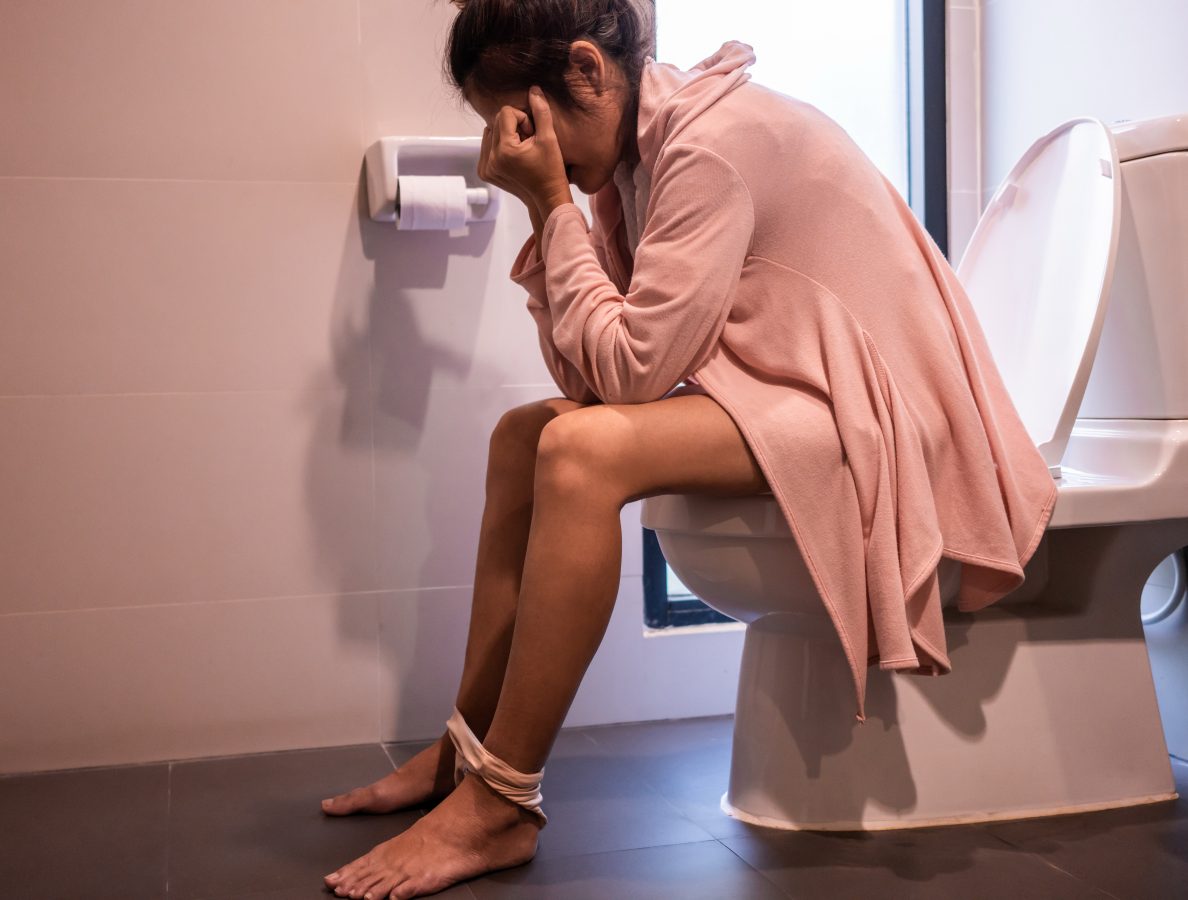Unveiling the Silent Symptoms of Urethral Syndrome: Expert Insights
You may notice signs that seem common to a bladder infection, this discomfort might not stem from germs or viruses. This condition, called urethral syndrome, can confuse even skilled doctors as they try to pinpoint the cause of your pain and trouble during bathroom visits for both pee and sperm release.
Without clear triggers found in tests but distress all too real, knowing about silent symptoms becomes key to finding relief through tailored treatments guided by expert insight into this misunderstood ailment.
Understanding Urethral Syndrome
Urethral syndrome, while mirroring symptoms you might find in UTIs or urethritis, has no links to infections. This condition can puzzle your doctor because its exact cause often hides from view. It may stem from hormonal changes like a drop in estrogen, irritation post-UTI, or even scented soaps that agitate delicate tissues.
You’ll feel pain deep in your lower belly and back if you have it, upsetting but true for about 25% of people seeking care for urinary troubles. Though anyone could get it, women between 30 and 50 are the usual ones who come forward with these complaints. Remember: If there’s no sign of infection yet discomfort lingers down low, the issue might be urethral syndrome, a complex riddle doctors aim to solve with careful steps toward treatment based on presenting signs.
Recognizing Silent Symptoms
You might feel pain yet see no signs of infection. It’s often urethral syndrome (UPS). Painful, yes; but visible symptoms?
Experts find treatment tough as there’s not one sure method to follow. Without standard care, doctors turn to symptom relief, strong painkillers, antidepressants, and nerve drugs are common choices. Why is this so complex?
The bladder and your urethra start developing together early on in life; troubles with one could affect the other too. Our research shows women with UPS have abnormal tissue changes in their urethras, a hint that may explain why you hurt. Doctors might conduct uroflowmetry tests to check urine flow rates.
Normal rates for healthy women are 23–32 mL/s, but our findings showed an average of 13.7 mL/s in patients with UPS, suggesting urinary problems possibly from an overactive or altered urethra. Curious thing though, not all pee problems match up neatly with disease marks under a microscope! Some suspect infections hidden deep within cause inflammation leading to these pains while others consider immune system malfunctions part of the problem as well, bacterial traces from pelvic regions invading elsewhere could stir trouble!
Exploring Common Causes
You’re likely here because you or someone close to you has urethral syndrome. This condition, marked by pain and a burning feeling during urination, isn’t always simple to spot. They range from unchecked STIs like chlamydia or gonorrhea to pesky irritants found in soaps or even foods, think fiery spices, alcohol, or caffeine-laden drinks.
Sex without protection ramps up your risk too; it’s not just about pregnancy but also guarding against infections that inflame the urethra. For women who’ve had multiple kids especially without an episiotomy, a cut made at childbirth, the likelihood of this discomfort hikes up. If these symptoms sound familiar, doctors might test for more common bladder issues first since they share signs with urethral syndrome.
Often only after those are ruled out does treatment specific for this tricky ailment kick in which may involve medication changes and diet swaps advised by experts on urinary health.
Diagnosing the Elusive Condition
In diagnosing urethral syndrome, doctors look beyond infections. They see if your peeing brings pain or happens too often; it’s a clue something’s wrong with the tube that lets out urine and semen for males. It may be sore, hurt when you pee or have sex, feel urgent like you can’t wait, make bathroom trips more than usual, or even show blood in your urine.
Your doc will ask about what bothers you and check your history to get this right since there isn’t always an infection found despite symptoms being present—they treat these signs as urethral syndrome then. Remember: avoid scents in soaps; watch meds; safe sex matters! Trouble persists despite simple fixes, such as lifestyle changes.
Experts may use scopes for an internal close-up to find answers and alleviate discomfort from elusive conditions.
Treatment Approaches Explored
In treating urethral syndrome, doctors often start with antibiotics to fight any hidden infections. If pain persists, they might suggest medications that ease bladder muscles or nerves. Some patients turn to physical therapy; it helps relax pelvic floor muscles, a common source of discomfort here.
It’s important but tough, patients need patience as results take time and effort. Water intake matters too: stay hydrated! This can flush out irritants inside the urinary tract while avoiding coffee or spicy foods which may worsen symptoms in some people.
Remember, every case is unique so treatments vary based on individual needs assessed by health experts. Trust them, they’ve studied years for this expertise.
Lifestyle Adjustments for Relief
To ease your urethral syndrome, small life shifts can be key. Drink lots of water; it helps clean your system. Cut spicy foods, caffeine, and alcohol from your meals – they might worsen symptoms.
Also try to pee when the urge hits instead of waiting too long which isn’t good for you if this condition is a part of your everyday life. Daily pelvic floor exercises strengthen muscles around the bladder and urethra, this could reduce pain or burning feels during peeing times. Stress management techniques like deep breaths also help as stress can tighten those same muscles up without you even knowing it’s happening right then and there!
Lastly, high-fiber food supports regular bowel movements – crucial since constipation adds pressure down there.
Preventive Measures and Tips
To dodge urethral syndrome, skip harsh soaps and bubble baths. Don’t use scents or spermicides either. Staying safe during sex helps, use condoms.
Pee soon after to cut risks further. Drink water a lot; it keeps you good inside. If symptoms start, the doctor might stop certain products first. They may give meds for pain or unseen infections too. Watch out for what stirs your bladder, the wrong food and drink could do it! Remember: finding the cause can be tricky but avoiding irritants is key in prevention.
Get checked if any troubles come up down there, it’s better safe than sorry!
Urethral syndrome often stays unnoticed because of its subtle signs. It’s key to watch for unusual discomfort or frequent urges to use the bathroom, even when infections like UTIs aren’t present. If you spot such changes, a std test from StdCheck.com might be wise.
This step ensures your health remains top-notch and potential issues get spotted early on by experts who can help guide you through testing and treatment if needed. Remember, staying alert helps keep silent symptoms from turning into bigger problems down the road.
Medically Reviewed by Kaci Durbin, MD, MBA, FACOG on May 14, 2024
Secure and Confidential
STD testing services
The fastest results possbile - available in 1 to 2 days

Tagged
Categorized As
Author: STD Check Editorial Team
At STDCheck.com, we go to great lengths to ensure quality content. We’re using our own collection of data. It is not bought or made up for “click-bait” purposes. We don’t entice traffic with cheesy graphics or raunchy headlines. Our information is to promote STD testing, educate people, let go of social stigmas, and bring awareness. We also provide a completely confidential atmosphere through private testing. When we produce an article, it is fact-based. We check it with medical advisors that approve it. Our staff consists of doctors and other medical professionals who peer review the content we make available on STDCheck.com. From all over the world, we have sourced the best and the brightest content developers, including medical professionals, marketing engineers, data scientists, content specialists, and media relations.




